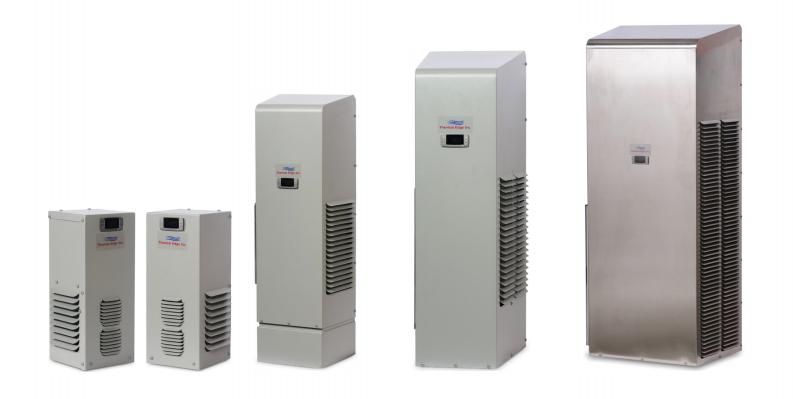When to Use an Air Conditioner for Electrical Component Cooling

Reliable operation of electrical equipment in an enclosure is dependent on its operating temperature. This in turn depends on the heat load of the electrical equipment and method of cooling adopted. In many instances, natural or fan-assisted ventilation is used. This is only viable if three conditions simultaneously exist. These are:
- Low heat load
- A moderate ambient temperature
- Clean environment
If any of these requirements can’t be met, enclosure cooling that relies on using ambient air won’t work and enclosure air conditioning is required.
Here’s when air conditioning should be used for electrical component cooling:
High Heat Load
The heat generated by the electrical equipment in an electrical enclosure has to be removed or the enclosure internal temperature will increase until an equilibrium point is reached. If the heat load is high and in the absence of adequate cooling, it’s likely the internal enclosure temperature will reach a temperature that’s above the safe operating temperature limit of the equipment.
If that occurs, malfunction of sensitive equipment such as variable frequency drives is likely, and memory cards on PLCs could be corrupted. If the temperature gets too high, equipment failure can be expected.
High Ambient Temperature
The removal of heat using natural ventilation, fans, or air to air heat exchangers relies on a temperature differential between the ambient air and the enclosure. This means that the enclosure will always be hotter than the ambient air. The actual temperature will be related to the total heat load and rate of heat removal.
If the heat load is high, the internal enclosure temperature could be as much as 10 to 15 degrees higher than the ambient air temperature. If the ambient temperature is high, this is likely to exceed the maximum recommended operating temperature for devices inside the enclosure.
Dirty and Polluted Environment
Dirt, dust, and corrosive vapors all have a detrimental effect on electrical equipment. Dirt gets into the contacts and other moving parts, preventing normal operation, and corrosive vapors corrode contact material and components and lead to component failure.
In such environments, it’s recommended that a sealed NEMA type 12, 4 or 4X enclosure is used to prevent equipment contamination. A closed loop cooling system is then required and, depending upon the heat load and ambient temperature, necessitates the use of an air conditioner or, if conditions are favorable, an air to air heat exchanger
Heat Sensitive Equipment
Not all electrical equipment has the same thermal capacity. Electrical contactors and circuit breakers are often able to tolerate relatively high temperatures without obvious damage, but other categories of electrical equipment must not be operated above their specified maximum operating temperature. Examples of such equipment include VFDs, Servo Drives, and PLC’s; if allowed to overheat they will malfunction, trip, or fail.
It’s essential that the thermal limitations of the electrical equipment are considered when evaluating electrical component cooling solutions.
Evaluate Your Electrical Enclosure Cooling
These four examples represent a few examples of when it’s necessary to use an enclosure air conditioner. They illustrate the need to consider enclosure cooling requirements when designing electrical enclosures. The trend away from electro-mechanical components to sophisticated power electronics devices, such as variable speed drives and PLC controlled equipment, has increased enclosure heat loads and at the same time resulted in the need for lower enclosure temperatures. In such instances, the only effective method of enclosure cooling is the use of enclosure air conditioning.
If you need help selecting the best possible electrical component cooling for your enclosure, contact our Sales Team. Our experts will take you through the process of assessing your enclosure cooling requirements and help select the optimal solution for your application.

